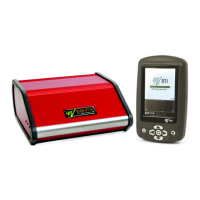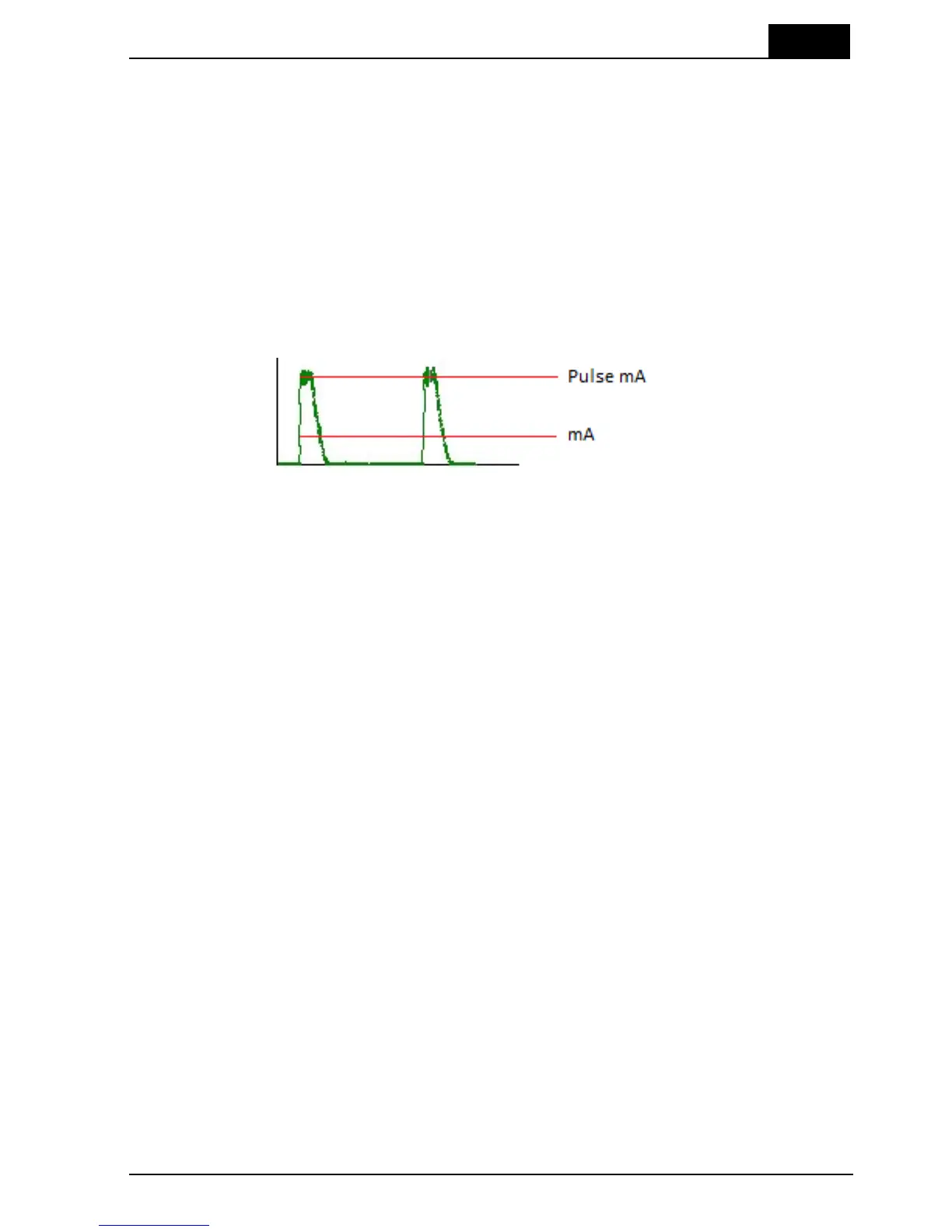5. Measurements with the Barracuda System
Tube Current Probes
2012-10/4.3A
165
Barracuda & QABrowser Reference Manual
Tube Current Probes5.9
Three different mAs probes can be used with the Barracuda. One invasive and two
non-invasive types are available. The description of the mAs probes is valid for all
different type of X-ray systems. The mAs probes are used to measure mAs (current
time product) and mA (tube current). Tube current is normally measured only for
fluoroscopy or when long exposure times are possible to allow read-out during the
exposure. When tube current is presented for exposures it has been calculated from
the measured mAs and from measured exposure time.
For pulsed fluoroscopy it is possible to measure pulse mA in addtion to the mA value.
The difference between the pulse mA and the traditional mA is explained in the picture
below.
(Note that for DC waveform, pulse mA and mA gives the same value.)
You can measure mAs as a single parameter or multi-parameter together with the
MPD. When using only the mAs-probe the measurement always starts when the
mAs-probe detects a signal. When using multi-parameter you can choose to trig
individually or to trig with the MPD:
Individually: The mAs-probe starts to measure as soon as the tube current is
detected. The MPD starts to measure as soon as it detects the radiation. Normally
will the mAs-probe start to measure first since tube current first charges the HV
cables before it "reaches" the tube and radiation is generated.
MPD: Both the mAs-probe and the MPD starts to measure at the same time; when
the MPD detects radiation. This is the easiest way to measure since there is almost
no risk for false triggering.
It is important to be aware of that measured mAs-values may differ depending on
which trig method is used. Especially when measuring low mAs values the difference
may be significant when comparing the two methods or comparing to "traditional" mAs
meters. The value you get when triggering on the tube current (Individual trig)
corresponds to the total mAs supplied from the generator. A part of that has been used
to charge the cables and the rest has reached the tube and contributed to the
exposure and the image. When you use MPD trig you measure only the mAs that
actually contributes to the exposure and the generation of the image.
The discussion above is generally true for the invasive MAS-1B probe since it is
connected in the transformer and measures "all" current. The non-invasive probes,
MAS-2B and MAS-3, can be placed anywhere on the HV cable. If they are placed
close to the tube they will measure only the current that floats through the tube and
contributes to the radiation and the choice of trig source will have limited influence on
the measured values.
When measuring on fluoroscopy the trig source has no influence and it is
recommended to trig on the MPD.

